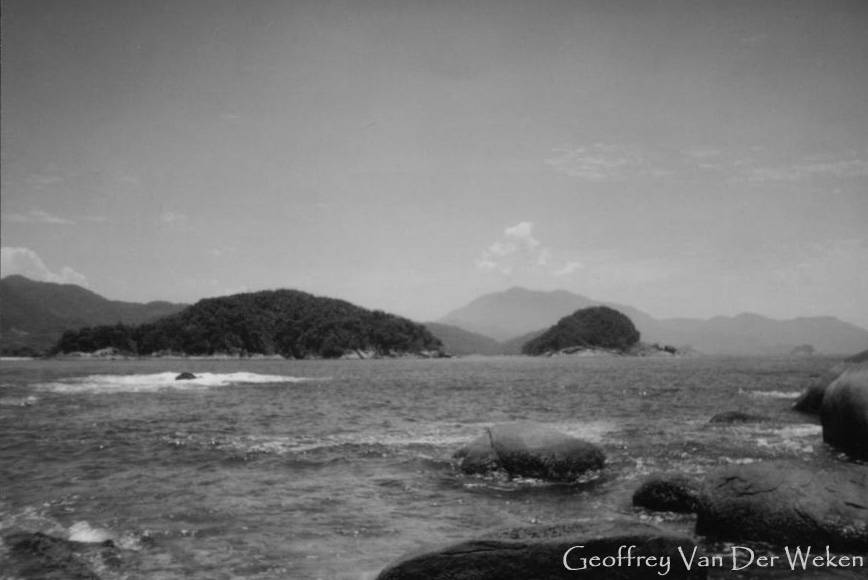
Impossible double exposure?
Kentaro Mori - November
19th, 2003
Revised:
01.13.2004
This is the original image

I created a white mask, with only the background. The part where the saucer is is just transparent here. This mask was applied with the "add" setting, with the value of 10. The result is that this is only a linear light addition, with no "sophisticated processing algorithm". This should be an acceptable simulation of what would the the result of double exposure of a white background with a black UFO, with an actual film. The result:
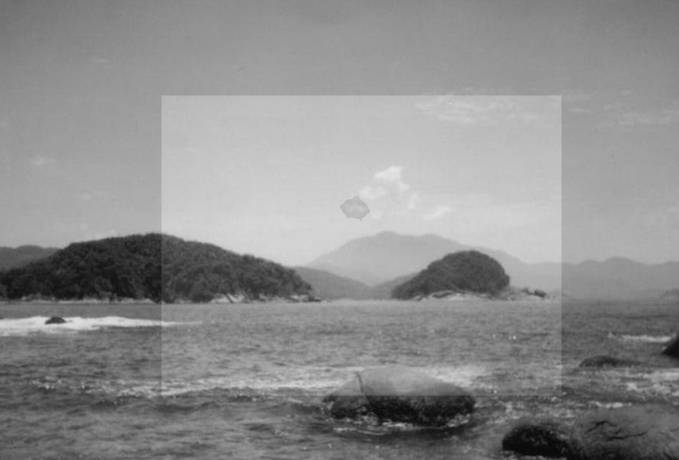
This is a cropping:
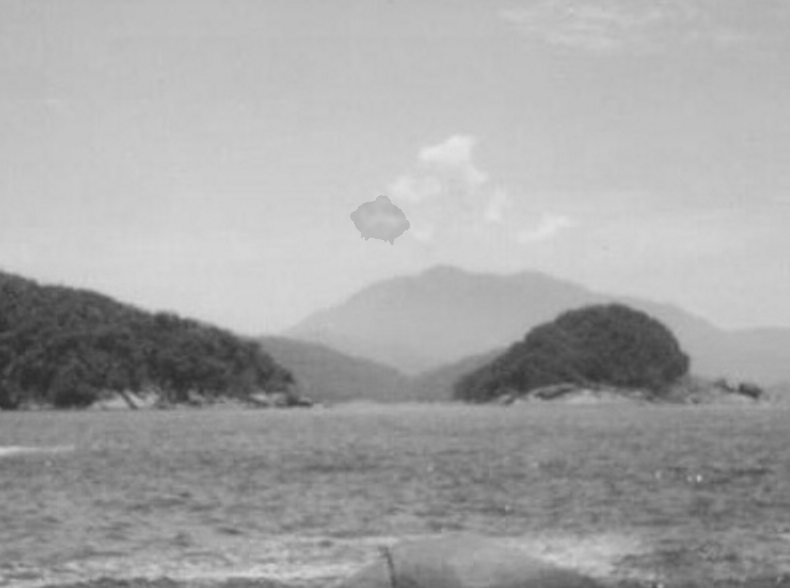
Then, I contrast enhanced the image. Barauna also enhanced the contrast of his photos. The result:
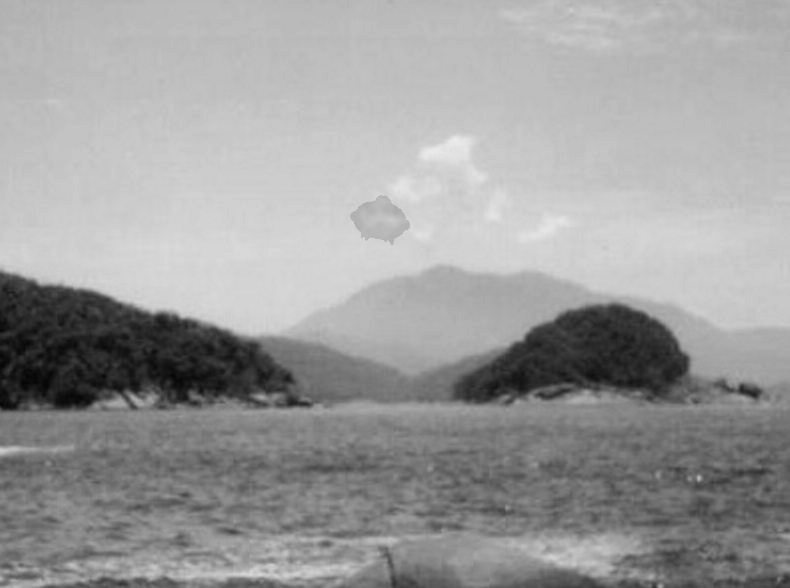
Impossible? Some parts of the Island have a gray value of 7 (scale 0-255). The darkest part inside the UFO, a value of 172. All parts immediately outside the UFO are around 200+. We have a contrast between the UFO and the sky of around 30, when the darkest parts of the photo have a value of 7. This is possible.
But the Island on the contrast enhanced image above has not much detail. This is probably because the original image hadn't an Island with much contrast. So, I decided to make it all again with another landscape, that may be familiar. When I applied the white mask, as a double exposure simulation, the result was:
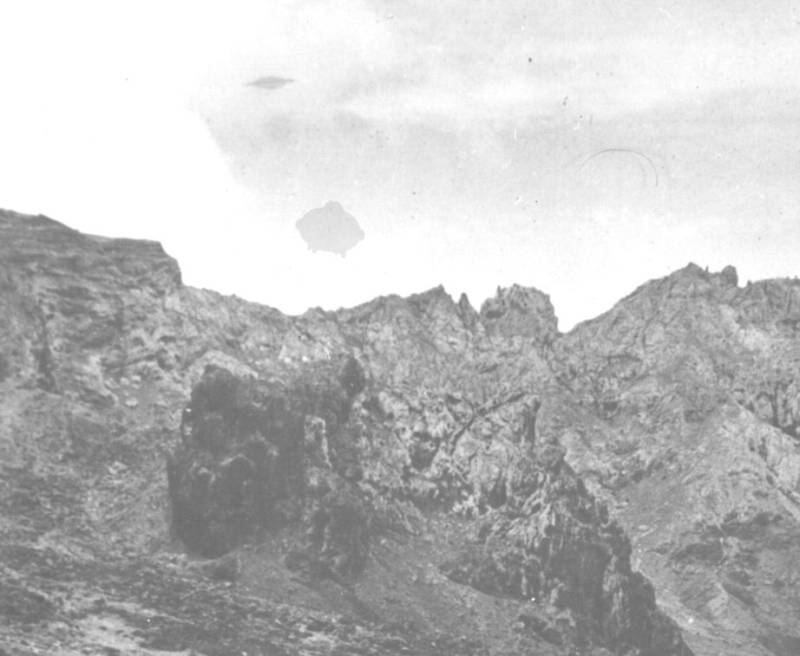
And, when contrast enhanced:
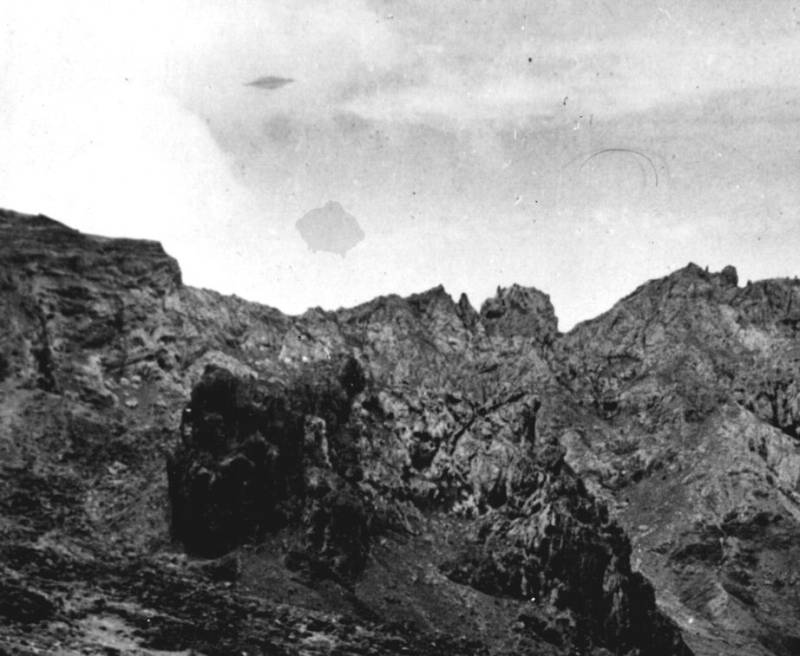
The darkest parts of the image above have a value of around 24. The darkest part of the UFO, around 197. The background sky variates around 220. And we must notice: in this simulation, this background was possibly triple exposed!
Also notice that the simulated UFO looks flat. That's because there was absolutely no "mask" inside it. With a real negative image of an object with details, the result would be different. But this is all a digital simulation. We must, and hopefully will try to reproduce things in film. And, it must always be emphasized, this is just speculation and suggestion. Only with new and open analysis of the original negatives we may discover how the hoax was made, if it really was a hoax.
As a final note that maybe should have come first: I measured the grayscale on the the third photo from this source. The darkest parts of the Island have a value of 80 (always on the 0-255 scale). The darkest parts of the UFO, around 170. The surrounding sky, 200+. There is a contrast of around 30 in the grayscale between the UFO and the sky, while the darkest parts of the Island have a value of 80. This data indicates that the photo could be the result of double exposure even with no later contrast enhancement.
But when measuring the grayscale from another source, I did confirm Brad Sparks' measurements. The darkest parts of the island hav a value of 0. The UFO have parts on 180, and the surrounding sky, 220. We need to further verify all of it. The images from this source are strange, they seem heavily contrast enhanced. This is the histogram of P1:
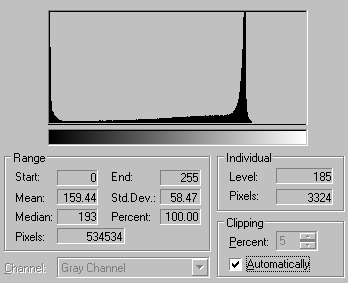
Notice the two peaks, and how one peak is at the very bottom of the scale, while the other peak, around 4/5. For comparison, this is the histogram of P1 on the another source (which seems compatible with a double exposure, even with no contrast enhancement):
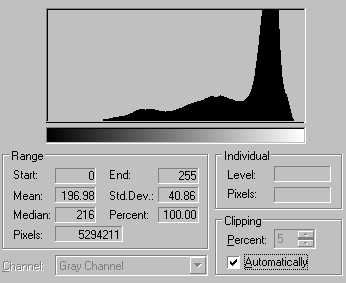
Notice how the darkest pixels beggin around 1/4 on the grayscale. Both of the sources, I repeat, are first generation prints.
See also Frank Salisbury's reproduction of the Trindade photos, presumedly with a non-usual double exposure technique, as presented on his statement on the 1968 UFO Symposium -- pointed out by Manuel Borraz.
END